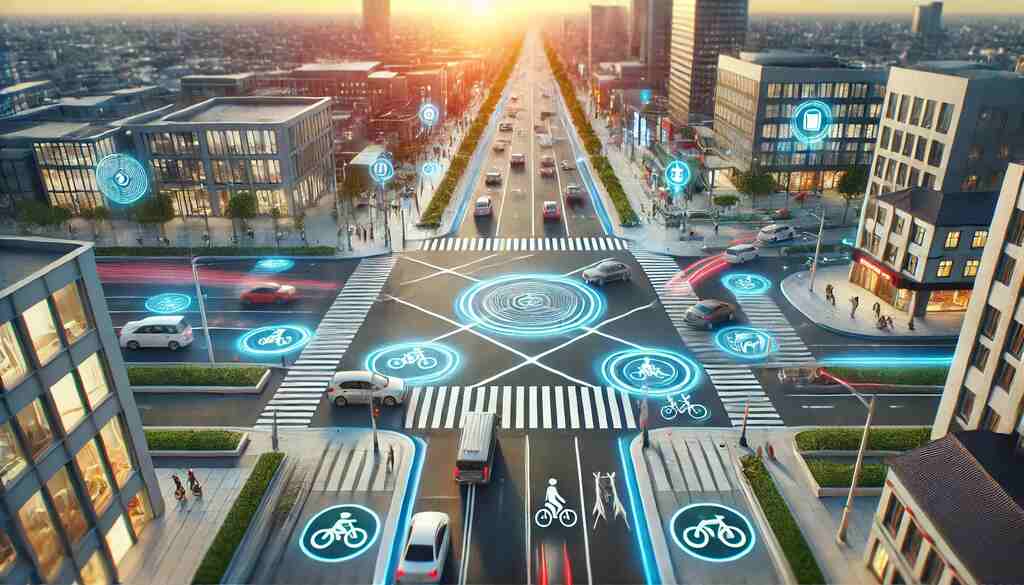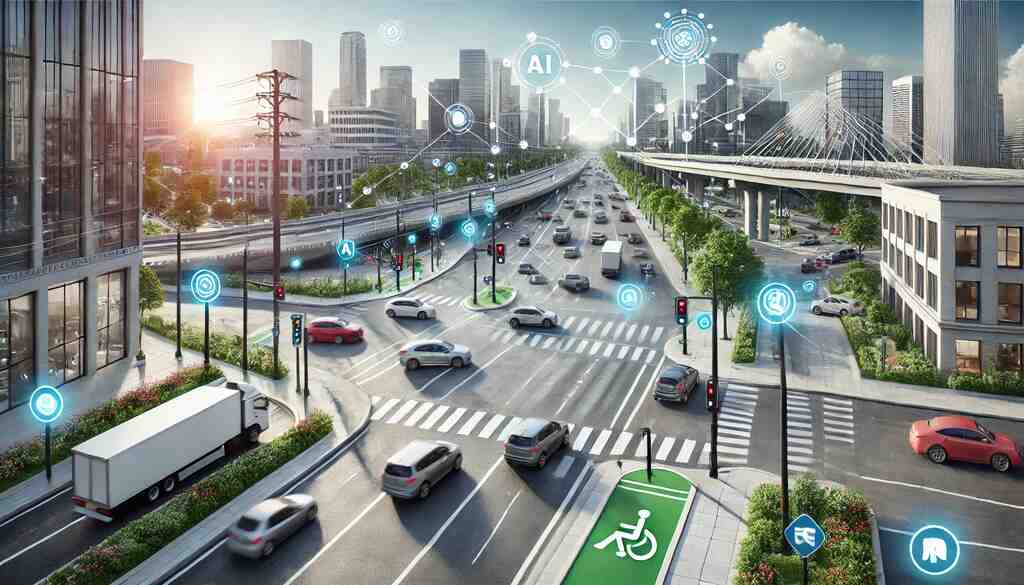Traffic conflicts are a pressing concern worldwide, impacting road safety, urban planning, and transportation efficiency. The proceedings of the 1st workshop on traffic conflicts provided groundbreaking insights into this subject, bringing together experts, policymakers, and researchers to discuss innovative solutions. In this article, we will explore seven critical learnings from the workshop that can help shape future traffic management strategies.
Table of Contents
Toggle1. Understanding Traffic Conflicts: The Core of Road Safety
Traffic conflicts occur when two or more road users are on a collision course, requiring one or more of them to take evasive action. These conflicts serve as early indicators of potential crashes, making their study essential for proactive traffic safety management. During the proceedings of the 1st workshop on traffic conflicts, researchers emphasized the need for precise conflict analysis techniques.
One of the key discussions revolved around the Surrogate Safety Measures, which focus on near-miss situations rather than actual accidents. Unlike traditional crash data, conflict analysis allows for real-time intervention before a serious incident occurs. Advanced technologies, such as AI-driven surveillance and predictive analytics, were highlighted as crucial tools in identifying and mitigating conflicts efficiently.
Additionally, workshop participants stressed the importance of behavioral analysis in understanding why conflicts arise. By analyzing driver psychology, pedestrian behavior, and road-user interactions, authorities can develop strategies to reduce conflicts through targeted interventions such as improved signage, better road design, and stricter law enforcement.
2. The Role of Data in Identifying and Mitigating Traffic Conflicts
A major takeaway from the proceedings of the 1st workshop on traffic conflicts was the growing importance of data-driven decision-making. With the rise of smart cities, data collection from various sources—CCTV cameras, GPS tracking, and sensor-based monitoring—has become more accessible.

Experts at the workshop showcased successful case studies where data analytics played a pivotal role in conflict detection and resolution. One notable example came from Sweden, where machine learning algorithms were used to analyze road user interactions, enabling authorities to predict and mitigate potential traffic conflicts.
Another insightful discussion focused on the integration of Big Data with Traffic Simulation Models. By simulating traffic flow based on historical and real-time data, urban planners can foresee potential bottlenecks and high-risk zones before they develop into serious safety hazards. This proactive approach is particularly beneficial in high-density urban areas where minor conflicts can quickly escalate into major disruptions.
3. Human Factors: How Behavior Contributes to Traffic Conflicts
Understanding human behavior is crucial in preventing traffic conflicts. The proceedings of the 1st workshop on traffic conflicts emphasized the need to consider driver aggression, distraction, and decision-making patterns when formulating road safety policies.
Experts at the event highlighted several psychological factors that contribute to traffic conflicts, including:
- Risk Perception: Many drivers underestimate potential hazards due to overconfidence or habitual behaviors.
- Distraction: Mobile phone usage, in-car entertainment systems, and external distractions lead to delayed reactions.
- Fatigue: Sleep-deprived drivers have slower reflexes, increasing the likelihood of conflicts.
To counter these issues, the workshop recommended implementing more behavioral interventions. Solutions such as awareness campaigns, gamification strategies, and real-time feedback mechanisms (e.g., in-vehicle warning systems) were suggested to influence positive driver behavior.
4. The Impact of Road Design on Traffic Conflicts
A well-designed road infrastructure can significantly reduce traffic conflicts. The proceedings of the 1st workshop on traffic conflicts revealed that many conflict-prone areas result from poor road design, including insufficient signage, blind spots, and inadequate pedestrian crossings.
One of the key discussions revolved around self-explaining roads—a concept that encourages intuitive design to guide road users naturally towards safer behaviors. For example, narrower lanes tend to reduce speeding, while strategically placed roundabouts help minimize conflict points.
Urban planners at the workshop also stressed the need for adaptive road designs, which can adjust to different traffic patterns using smart infrastructure. For instance, dynamic lane markings and variable speed limits can help optimize traffic flow and reduce conflicts in real-time.
5. Technological Innovations in Traffic Conflict Analysis
Technology plays a pivotal role in traffic conflict management. The proceedings of the 1st workshop on traffic conflicts highlighted several cutting-edge innovations that are transforming the field, such as:
- AI-Powered Video Analytics: Smart cameras with AI algorithms can detect near-miss incidents and provide real-time alerts.
- Connected Vehicles: Vehicle-to-Everything (V2X) communication enables cars to exchange data with traffic signals, infrastructure, and other vehicles to prevent conflicts.
- Augmented Reality (AR) Navigation: AR-enhanced navigation systems can highlight potential conflict zones on a driver’s dashboard, enhancing situational awareness.
These technologies, combined with robust data analytics, are paving the way for a future where traffic conflicts can be identified and mitigated before they result in severe accidents.
6. Policy and Regulatory Changes to Address Traffic Conflicts
Government policies and regulations play a crucial role in mitigating traffic conflicts. The proceedings of the 1st workshop on traffic conflicts underscored the importance of creating flexible yet enforceable policies that encourage safer road behavior.

Key recommendations included:
- Stricter Penalties for High-Risk Behaviors: Tougher laws on speeding, distracted driving, and aggressive driving.
- Incentives for Safe Driving: Insurance discounts and rewards for drivers with conflict-free records.
- Urban Traffic Management Reforms: Implementation of congestion pricing to reduce high-density traffic and potential conflicts.
Collaboration between policymakers, urban planners, and technology providers was identified as a crucial factor in making these regulatory changes successful.
Have a question or feedback? Connect with us in the comments below or reach out to our team for personalized assistance on LookMyFinance.
7. Future Directions: The Road Ahead for Traffic Conflict Research
The proceedings of the 1st workshop on traffic conflicts marked the beginning of a long journey toward safer roads. Experts agreed that future research should focus on:
- Artificial Intelligence (AI) Integration: Using AI to develop autonomous conflict prevention systems.
- More Robust Conflict Prediction Models: Enhancing predictive analytics to foresee conflicts with greater accuracy.
- Global Knowledge Sharing: Establishing an international database of traffic conflicts to facilitate cross-border learning.
By leveraging cutting-edge research and collaborative efforts, we can move towards a future where traffic conflicts are drastically reduced, leading to safer and more efficient transportation networks.
Frequently Asked Questions (FAQs)
1. What is traffic conflict analysis?
Traffic conflict analysis is the study of near-miss situations and interactions between road users that indicate potential collisions, helping to improve road safety proactively.
2. How does AI contribute to reducing traffic conflicts?
AI-powered technologies, such as predictive analytics and video surveillance, detect traffic conflicts in real time, enabling preventive measures before accidents occur.
3. What are surrogate safety measures in traffic studies?
Surrogate safety measures analyze road user interactions to identify unsafe events before they result in actual crashes, making them useful for proactive safety planning.
4. Why is human behavior important in traffic conflict analysis?
Driver distractions, risk perception, and decision-making patterns significantly impact road safety, making behavioral analysis essential for effective conflict mitigation.
5. How do connected vehicles help in reducing traffic conflicts?
Connected vehicle technology enables real-time communication between vehicles and infrastructure, improving awareness and reducing collision risks.
6. What role does road design play in traffic conflicts?
Proper road design, including intuitive layouts and adaptive elements, can minimize conflict points and improve overall traffic safety.
7. How can data analytics enhance traffic conflict management?
Big data and machine learning allow authorities to predict and mitigate traffic conflicts by analyzing past and real-time traffic patterns.
8. What is the impact of distracted driving on traffic conflicts?
Distracted driving, such as mobile phone use, significantly increases the likelihood of traffic conflicts by reducing driver reaction time.
9. What policy changes can help in mitigating traffic conflicts?
Stricter enforcement of road safety laws, incentives for safe driving, and congestion pricing strategies can reduce traffic conflicts effectively.
10. How do self-explaining roads contribute to safer traffic conditions?
Self-explaining roads use intuitive design elements to naturally guide road users towards safer behaviors, reducing conflicts and accidents.
11. What are the major causes of pedestrian-vehicle conflicts?
Poorly marked crosswalks, lack of pedestrian signals, and distracted walking contribute to frequent pedestrian-vehicle conflicts.
12. How can urban planning help in reducing traffic conflicts?
Smart city planning, including better road infrastructure and multimodal transportation integration, can effectively lower conflict occurrences.
13. How do traffic simulation models aid in conflict detection?
Traffic simulation models use historical and live data to predict high-risk zones and optimize road management strategies.
14. What are the benefits of real-time conflict detection systems?
Real-time conflict detection systems provide instant alerts, allowing road users and authorities to take immediate corrective actions.
15. How do smart intersections help in reducing conflicts?
Smart intersections use AI and IoT sensors to adjust traffic signals dynamically, reducing congestion and conflicts at busy crossings.
16. What is the role of law enforcement in managing traffic conflicts?
Strict law enforcement against aggressive driving, speeding, and red-light violations helps minimize dangerous conflicts on the road.
17. How do roundabouts improve traffic safety?
Roundabouts reduce the number of conflict points compared to traditional intersections, leading to fewer severe collisions.
18. Why is predictive analytics important in traffic management?
Predictive analytics help authorities anticipate high-risk situations and implement safety measures before conflicts escalate.
19. What are some global best practices for traffic conflict mitigation?
Countries like Sweden and the Netherlands implement Vision Zero policies, advanced road designs, and strict regulations to minimize traffic conflicts.
20. How can drivers contribute to reducing traffic conflicts?
Drivers can reduce conflicts by following traffic laws, staying attentive, avoiding distractions, and practicing defensive driving techniques.
Conclusion
The proceedings of the 1st workshop on traffic conflicts provided invaluable insights into road safety, urban planning, and technology integration. With the adoption of data-driven approaches, behavioral interventions, and smart infrastructure, we can mitigate conflicts before they escalate into serious accidents. By implementing the learnings from this workshop, governments and stakeholders can work together to create a safer road environment for all.





